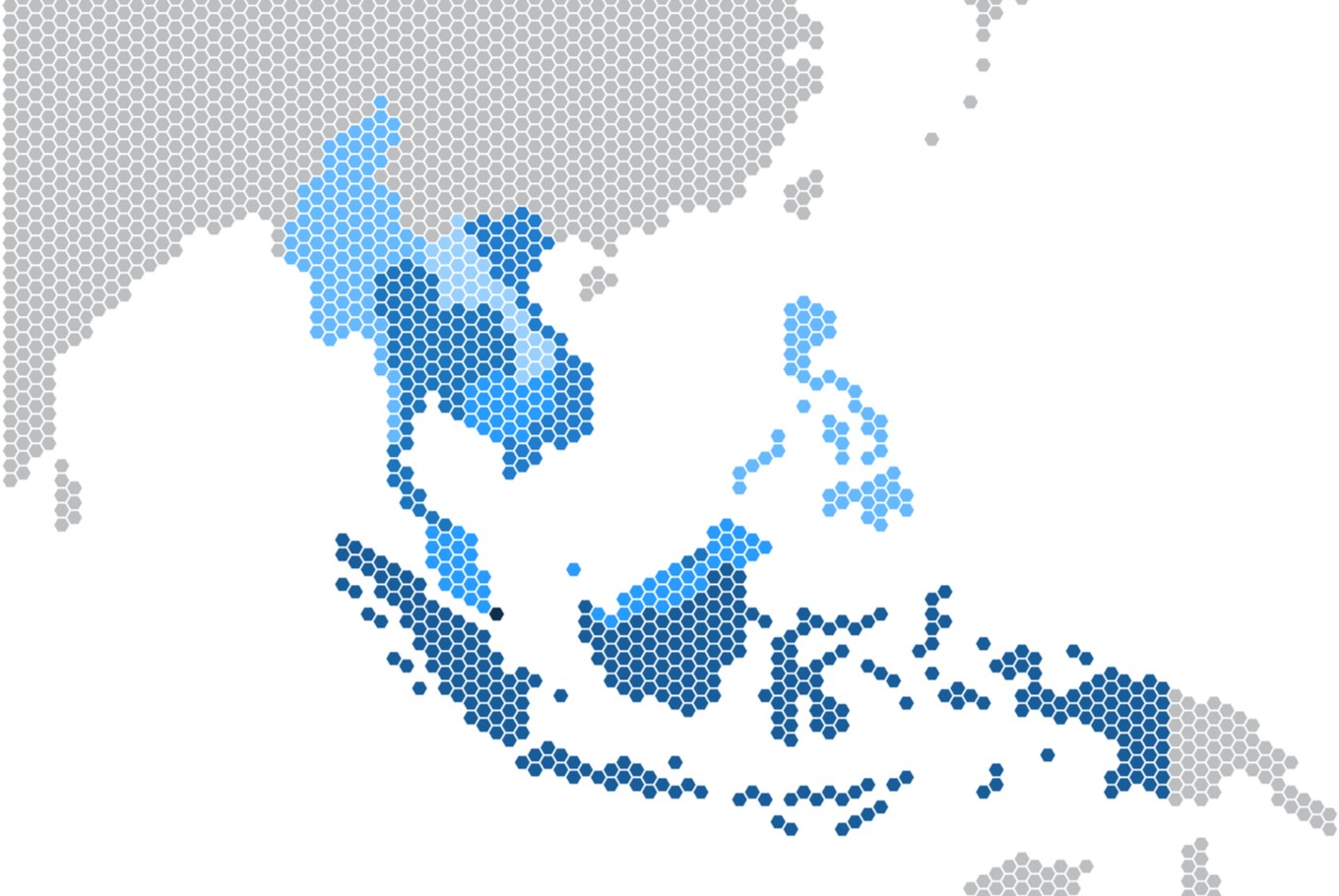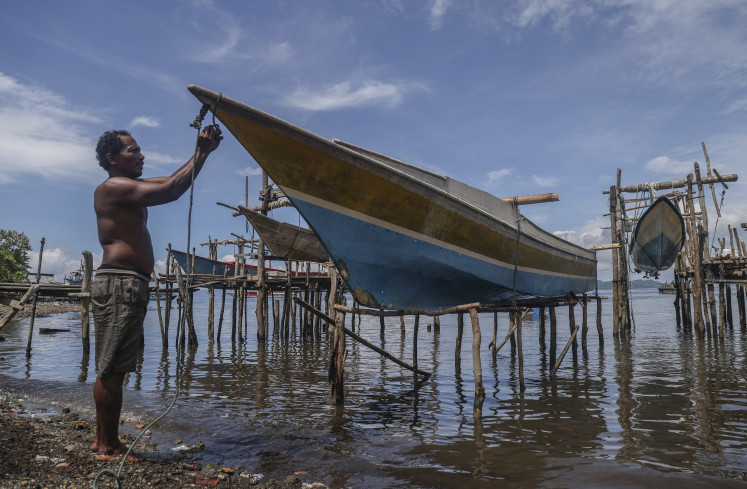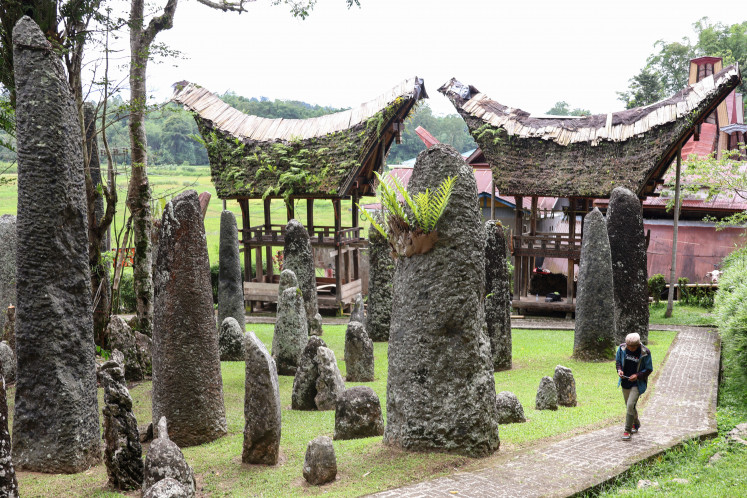Popular Reads
Top Results
Can't find what you're looking for?
View all search resultsPopular Reads
Top Results
Can't find what you're looking for?
View all search resultsNations still oceans apart on Indo-Pacific future
Change text size
Gift Premium Articles
to Anyone
A
growing consensus is emerging that Indo-Pacific best defines the region that is most immediately impacted by the Asian Century, with all the unpredictable changes that it brings to the geopolitical and geo-economic landscapes.
Foreign policy and defense communities, including government officials, diplomats, military officers, scholars and commentators talk about Indo-Pacific like the way they discussed Asia Pacific just two decades ago.
Getting everyone to talk about Indo-Pacific is one thing, getting them to agree about what the future holds for this newly defined region is completely another. There is no consensus as countries, big and small, grapples with the implications of the rapidly changing geopolitical environment to their strategic national interests.
Nations in the Indo-Pacific region are still oceans apart about what the future holds for the region.
A best case scenario has all countries in the region prospering together. A worst case one has the United States and China, both nuclear powers, engaging in cold or hot war, and other countries in the region being pulled apart to take sides.
Indo-Pacific makes more sense because it places Asia, as the centrifugal of global economic activity this century, at the center of the geographical map rather than at the periphery the way we would under the Asia-Pacific concept.
In most literatures, Indo-Pacific spans from Japan to the north, to Australia to the south, and from the western Pacific islands to the east, to India to the west. Where the line is drawn to the west however is still debatable, with some stretching it all the way to the western coast of Africa, including South Africa.
While this definition excludes the American continent, any analysis on the Indo-Pacific geopolitical environment could not exclude the US, which has a long history of military presence and alliances with countries in the region.
The US is among the first to officially embrace the idea of Indo-Pacific region. The National Security Strategy paper in 2017 named China, along with Russia, as competitors to challenge US power, influence and interests, and put Indo-Pacific as the most strategically important region. In May, it renamed the Pacific Command (PACOM) the US Indo-Pacific Command.
China regards these moves as a US attempt at containing its rise.
Chinese official literatures had avoided using the term Indo-Pacific because it smacks too much of Americanism.
Yet, its 21st Century Maritime Silk Road, the ocean portion of its Belt and Road Initiatives (BRI), spans from the western Pacific islands, through Southeast Asian waters and the Indian Ocean to the Red Sea and Mediterranean. BRI is at least partly Indo-Pacific, just not in name.
Another reason for China’s reluctance is that the US is reviving discussions of the Indo-Pacific Quadrilical Security Dialogue that includes Japan, Australia and India. First mooted in 2008, the Quad is regaining traction, and although it purportedly seeks to secure a Free and Open Indo-Pacific (FOIP), it is seen in Beijing as another piece of US containment policy.
China’s military buildup in the South China Sea, and the construction of sea ports along the Indian Ocean that would give access to its warships, as well as its aggressive economic expansion through the BRI, have only sowed suspicions of its hegemonic intentions among countries in the region.
More than transforming the geo-economic landscape, the Asian Century is changing big power relations in the Indo-Pacific region. The rise of China — not as peaceful as it was once regarded — and the US’ response is creating tensions, and countries caught in the middle have to respond and adjust one way or another.
How and what they have to adjust to is something that most nations struggle today as the geopolitical environment remains fluid. Almost every nation in the region counts China as its biggest trading partner, but many still rely on the US for their security — some through alliances, others out of strategic interests.
Even the two big powers are still finding their feet in this new geopolitical landscape: The US is struggling to accept the reality that it will have to share power, and China is struggling on how use its new found power, acquired through rapid economic rise in the last three decades, without scaring off neighbors.
The contest for Indo-Pacific hegemony has been further complicated by old security issues in the region, including the North Korea nuclear issue, tensions in the Korean Peninsula and the Formosa straight, Japan’s plan to become a military power, and territorial disputes that are potential flashpoints, such as in the South China Sea, the East China Sea and the India-China border.
These issues, directly or indirectly, have repercussions on big power relations.
The future of Indo-Pacific region for now looks hazy as each country. Where does this leave Indonesia?
As a matter of principle, Indonesia once again will be tasked to take the middle path in this emerging superpower contest. Along with other middle powers in Asia, such as India, Indonesia could play a more active diplomatic role in preventing the Indo-Pacific region from turning into the next theater of war, both cold and hot, between the two superpowers.
Indonesia can look back with pride at its record during the Cold War between the US and the Soviet Union, when it steered clear of the superpower conflict, refusing to be aligned with either, but playing an active role nevertheless to ensure peace and stability for its own immediate region in the Southeast Asia.
Indonesia’s own proposal for an Indo-Pacific regional architecture, one that is more open, transparent and inclusive (meaning to include China), now being debated with other members of the ASEAN, could help to close the gap and narrow existing mistrusts among countries in the region.
***
The writer is a senior Indonesian journalist who took part in the IndoPacific Security Dialogue on Dec. 10 to 12 at the East West Center in Honolulu, Hawaii.











